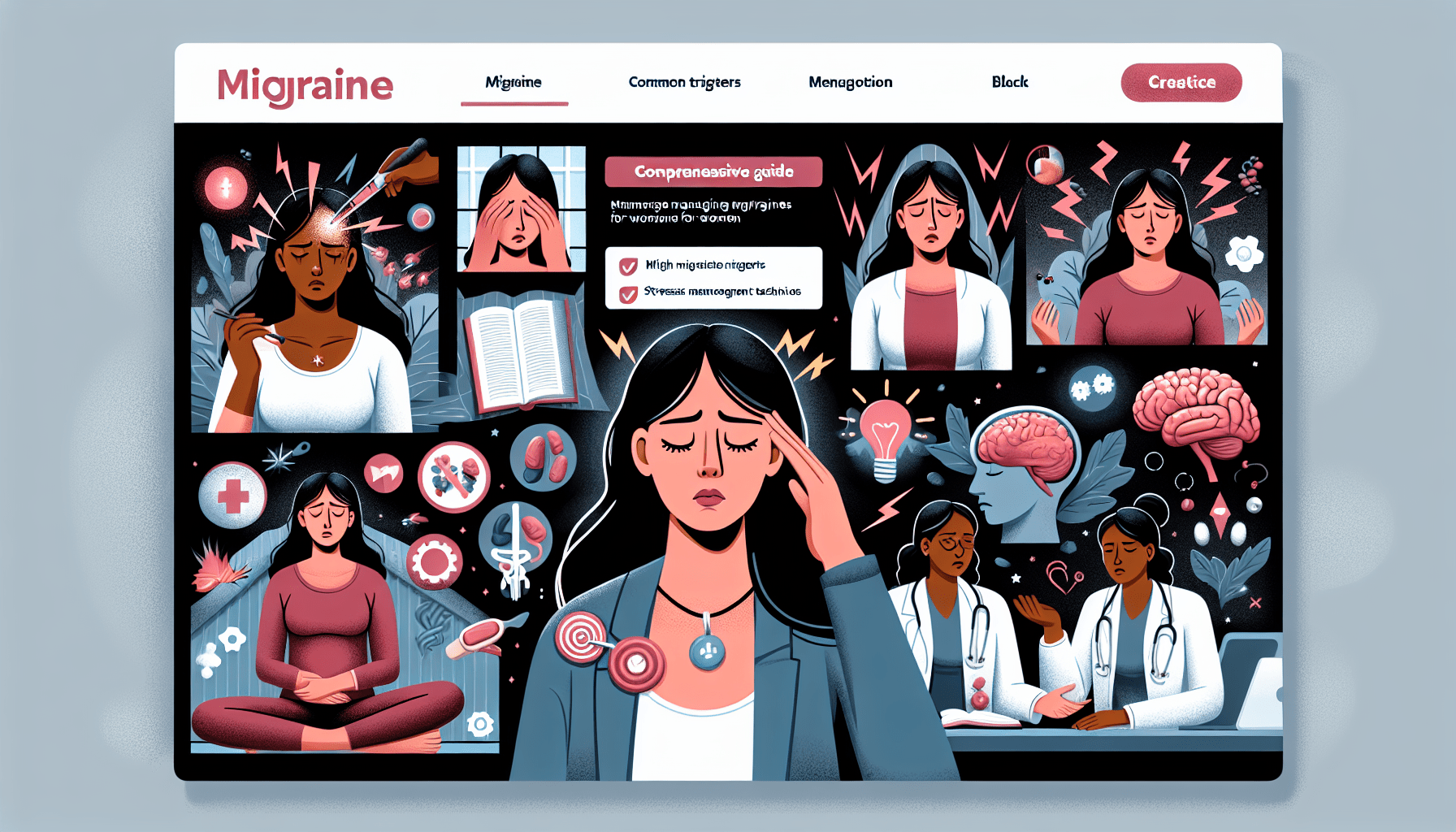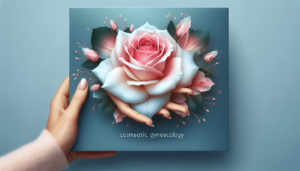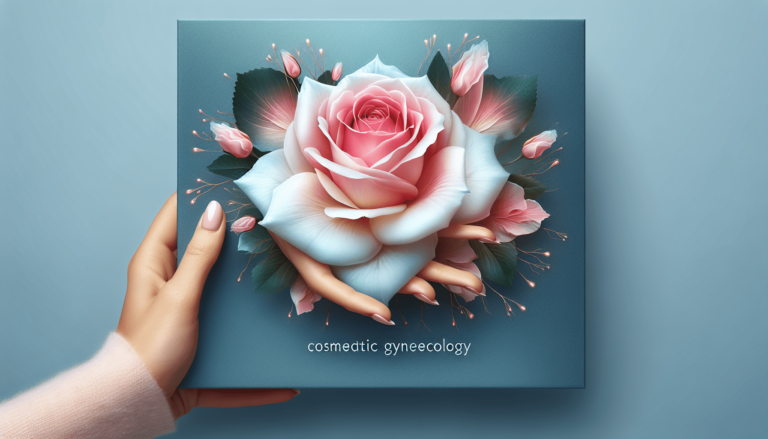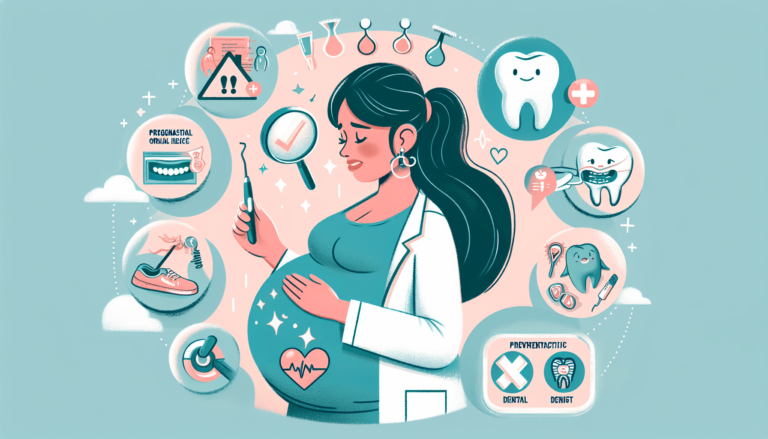As an Amazon Associate I earn from qualifying purchases.
Are you tired of suffering from debilitating migraines that seem to plague your everyday life? If you’re a woman who has been struggling to find effective methods of migraine management, then this article is for you. We will explore the unique challenges that women face when it comes to migraines and provide practical tips and strategies to help you take control of your symptoms. Don’t let migraines hold you back any longer – it’s time to find relief and reclaim your life.
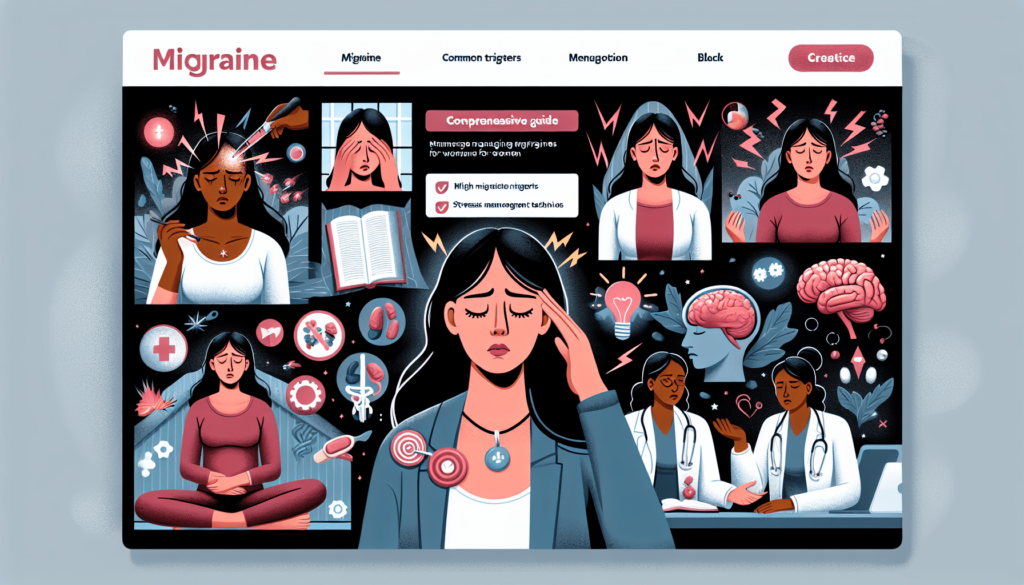
Understanding Migraine in Women
Migraines are a common neurological condition that affects a significant portion of the population, especially women. Research suggests that women are three times more likely to experience migraines compared to men. The prevalence of migraines in women can be attributed to a combination of genetic, hormonal, and environmental factors.
Prevalence of migraines in women
Migraines affect about 20% of women worldwide, making it a prevalent health concern for many. The condition often starts during adolescence and peaks in the 30s, affecting women in their childbearing years. The exact reasons for the higher prevalence in women compared to men are still not fully understood.
Different types of migraines
Migraines can manifest in different forms, resulting in various symptoms and experiences for women. The two most common types are migraines with aura and migraines without aura. Migraines with aura are characterized by specific visual disturbances, such as seeing flashes of light or zigzag patterns, that precede the onset of a headache. On the other hand, migraines without aura do not have associated visual disturbances but still cause intense throbbing or pulsating pain in the head.
Causes of migraines in women
The exact causes of migraines in women are not clearly understood, but researchers believe that fluctuations in hormones play a significant role. hormonal changes during a woman’s menstrual cycle, pregnancy, or menopause can trigger migraines. Some women also experience migraines during or after taking hormonal contraceptives or hormone replacement therapy. Environmental factors, such as stress, certain foods, changes in sleep patterns, and sensory stimuli, can also contribute to migraines in women.
Recognizing Migraine Triggers
Identifying and avoiding triggers is an essential aspect of managing migraines in women. By recognizing common triggers, women can take proactive steps to prevent or minimize the occurrence of migraines.
Identifying common triggers in women
Each woman’s triggers may vary, but some common triggers include stress, certain foods (such as chocolate, cheese, and caffeine), dehydration, lack of sleep, bright lights, loud noises, and strong odors. By keeping a migraine diary and noting the circumstances surrounding each migraine episode, women can start identifying their specific triggers.
Hormonal triggers in women
Hormonal triggers are particularly significant for women. Fluctuations in estrogen levels, such as during the menstrual cycle, can trigger migraines. Some women experience migraines during menstruation, while others may have migraines during ovulation or just before their period. Pregnancy and menopause can also lead to hormonal changes that trigger migraines in some women.
Environmental triggers in women
Environmental triggers play a crucial role in migraine occurrence for women. High levels of stress, exposure to bright lights, loud noises, and strong smells like perfume or cigarette smoke can act as triggers. Changes in sleep patterns, such as jet lag or disrupted sleep routines, can also increase the likelihood of migraines in women.
Managing Migraines with Lifestyle Changes
While medication can be an important part of managing migraines, lifestyle changes can also contribute significantly to reducing the frequency and severity of episodes. By adopting healthy habits, women can effectively manage their migraines and improve their overall quality of life.
Maintaining a consistent sleep schedule
Getting enough sleep and maintaining a regular sleep schedule is essential for migraine management. Aim for seven to eight hours of uninterrupted sleep each night. Establishing a consistent sleep routine by going to bed and waking up at the same time every day can help regulate sleep patterns and reduce the risk of migraines.
Adopting a healthy diet
A balanced and nutritious diet can have a positive impact on migraine management. Avoiding trigger foods like chocolate, cheese, processed meats, and caffeine may help prevent migraines. Instead, focus on consuming a diet rich in fruits, vegetables, whole grains, and lean proteins. Stay hydrated by drinking enough water throughout the day.
Regular exercise and stress management
Engaging in regular physical activity and stress management techniques can significantly reduce the frequency and severity of migraines. Exercise releases endorphins, natural painkillers, and mood boosters, promoting overall well-being. Additionally, stress management activities like yoga, meditation, and deep breathing exercises can help women manage stress, a common trigger for migraines.
Avoiding known triggers
Once women have identified their specific migraine triggers, it is crucial to avoid or minimize exposure to them whenever possible. Whether it’s bright lights, loud noises, certain foods, or environmental factors, making conscious efforts to steer clear of triggers can help prevent migraines.
Keeping a migraine diary
Keeping a detailed migraine diary can provide valuable insights into patterns, triggers, and potential management strategies. By recording the frequency, duration, and intensity of migraines, along with any associated factors, women can identify trends and make informed decisions regarding their migraine management.
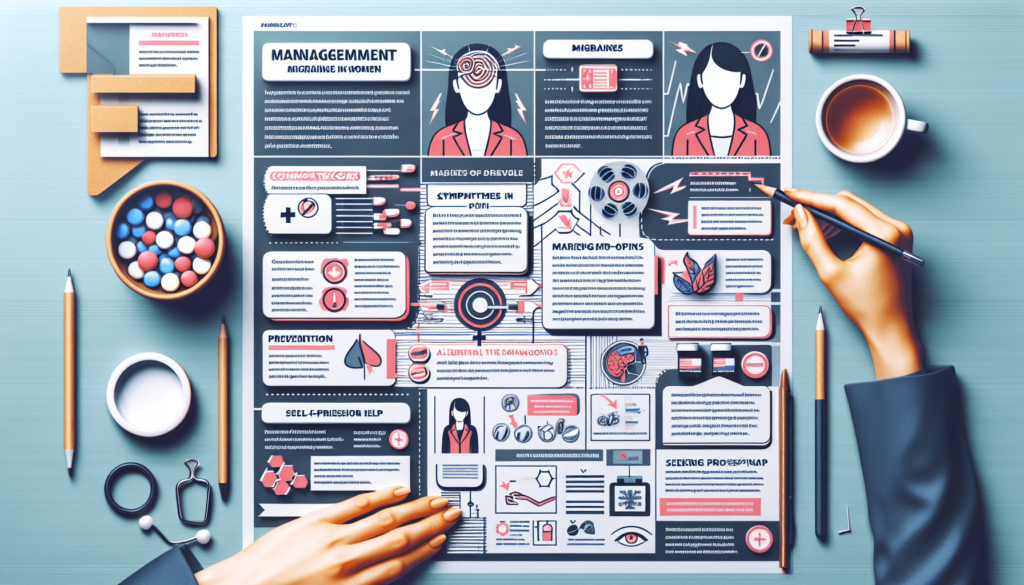
Over-the-Counter Medications for Migraines
Over-the-counter (OTC) medications can offer relief for mild to moderate migraines. These medications are easily accessible and can be an effective option for women seeking immediate symptom relief.
Types of OTC medications
OTC medications commonly used for migraine relief include nonsteroidal anti-inflammatory drugs (NSAIDs) like ibuprofen or naproxen sodium and analgesics like acetaminophen. Some OTC medications also include caffeine, which can help increase their effectiveness. It is important to carefully read and follow the instructions on the packaging for proper use.
Effectiveness of OTC medications in women
OTC medications can provide effective relief for many women experiencing migraines of mild to moderate intensity. However, their effectiveness may vary for each individual, and some women may require additional treatment options. It is important to consult with a healthcare professional if OTC medications do not provide adequate relief or if migraines become more frequent or severe.
Prescription Medications for Migraines in Women
For women with more severe or frequent migraines, prescription medications can be prescribed by healthcare professionals. These medications can help manage symptoms, reduce the frequency of migraines, or alleviate pain during the episodes.
Triptans and their usage
Triptans are a class of medications commonly prescribed for migraines. They work by narrowing blood vessels in the brain and reducing inflammation, relieving pain and other associated symptoms. There are several different types of triptans available, and healthcare professionals can determine the most suitable option based on individual needs. Triptans are often taken at the onset of a migraine attack for faster and more effective relief.
Other prescription medications for migraines in women
In addition to triptans, other prescription medications are available for the management of migraines in women. These may include preventive medications, such as beta-blockers, calcium channel blockers, and antidepressants. Antinausea medications or medications specifically designed to target migraine headaches may also be prescribed by healthcare professionals to help alleviate symptoms.
Hormonal Therapy for Migraines in Women
Hormonal therapy can be an option for women whose migraines are primarily triggered by hormonal fluctuations. Hormonal therapy aims to regulate hormone levels, preventing or reducing the occurrence of migraines.
The use of hormonal therapy for migraines
Hormonal therapy can be considered for women who experience migraines related to hormonal changes during the menstrual cycle, pregnancy, or menopause. It involves the use of specific medications or hormonal contraceptives that help stabilize hormone levels and potentially reduce the frequency or severity of migraines.
Different options for hormonal therapy
There are various options for hormonal therapy in women with migraines, and the choice depends on individual circumstances and medical history. Hormonal contraceptives, such as combined oral contraceptives or progestin-only contraceptives, can be effective in reducing migraine frequency for some women. Hormone replacement therapy (HRT) may also be considered for menopausal women experiencing migraines.
Alternative and Complementary Therapies
In addition to traditional medical treatments, alternative and complementary therapies can offer additional options for managing migraines in women.
Acupuncture and acupressure
Acupuncture and acupressure techniques stimulate specific points on the body to relieve pain and promote overall well-being. Some women find acupuncture or acupressure sessions helpful in reducing the frequency and severity of migraines.
Biofeedback and relaxation techniques
Biofeedback and relaxation techniques can provide women with effective tools for managing migraines. By learning to control physiological responses and reduce stress levels, women can potentially prevent or alleviate migraines. Techniques like deep breathing, progressive muscle relaxation, and visualization can be effective in reducing migraine-related pain and discomfort.
Herbal supplements and vitamins
Certain herbal supplements and vitamins may have a positive impact on migraine management for some women. Supplements like magnesium, riboflavin (vitamin B2), and coenzyme Q10 have shown potential in reducing the frequency and severity of migraines. However, it is important to consult with a healthcare professional before starting any new supplements to ensure safety and effectiveness.
Pregnancy and Migraine Management
Migraines during pregnancy require special considerations to ensure the well-being of both the mother and the unborn child. While some women may find their migraines improve during pregnancy, others may experience an increase in their frequency or severity.
Migraine management during pregnancy
During pregnancy, it is important to prioritize non-pharmacological approaches to manage migraines whenever possible. Maintaining a consistent sleep schedule, practicing stress management techniques, and avoiding known triggers can help reduce the need for medication. However, if migraines become severe or debilitating, healthcare professionals may prescribe specific medications that are considered safe for use during pregnancy.
Safety considerations for medications during pregnancy
Not all medications used for migraine management are safe to use during pregnancy. It is crucial for women to discuss their migraine management plan with their healthcare provider to ensure the safety of both the mother and the baby. Healthcare professionals can prescribe medications that have minimal risk to the fetus while providing adequate relief for migraines.
Seeking Professional Help
If you are experiencing migraines, it is important to consult a healthcare provider for a proper diagnosis and personalized treatment plan. Understanding the underlying causes and triggers of your migraines can significantly impact their management and minimize their impact on your daily life.
Consulting a healthcare provider
A healthcare provider, such as a primary care physician or a neurologist, can evaluate your symptoms, medical history, and potential triggers to determine the best course of action. They may recommend lifestyle changes, prescribe medications, or refer you to specialists for further evaluation and treatment if needed.
Importance of individualized treatment plans
Each woman’s experience with migraines is unique, and what works for one may not work for another. It is crucial to develop an individualized treatment plan that takes into account your specific triggers, medical history, and personal preferences. Working closely with your healthcare provider will ensure that your treatment plan is tailored to your needs, optimizing its effectiveness and improving your quality of life.
Support and Resources for Women with Migraines
Living with migraines can be challenging, but there are numerous support groups and resources available to help women navigate the condition and find support from others facing similar challenges.
Support groups and online communities
Joining support groups or participating in online communities can provide women with a sense of belonging and support. Connecting with others who understand the experiences and challenges of living with migraines can be empowering and provide valuable insights and advice.
Educational resources for migraine management
Educational resources, such as books, websites, and reputable online sources, can provide women with valuable information on managing migraines. They can help women better understand their condition, learn about different treatment options, and empower them to take an active role in their migraine management.
By understanding the prevalence, different types, and causes of migraines in women, recognizing triggers, adopting lifestyle changes, considering medication options, exploring alternative therapies, and seeking professional help when needed, women can effectively manage their migraines and improve their overall well-being. Remember, you don’t have to face migraines alone, and there are resources and support available to help you navigate this journey.
Amazon and the Amazon logo are trademarks of Amazon.com, Inc, or its affiliates.
